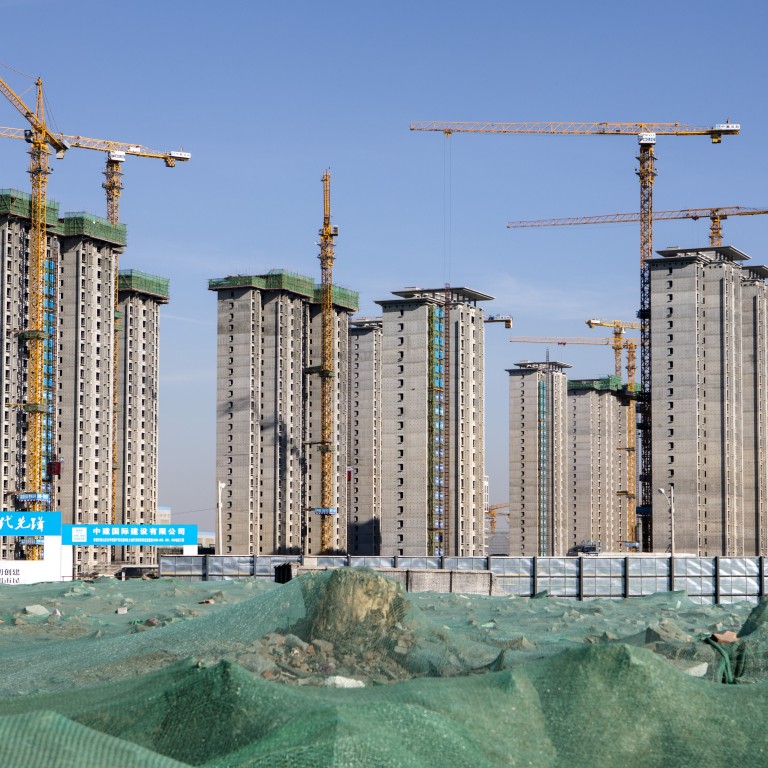
China set to report slowest economic growth for 28 years
- Figures to be released on Monday could show 2018 GDP growth slowed to 6.6 per cent
- Beijing’s promise of more support only likely to be enough to stop slide getting worse, analysts say
China is expected to report on Monday that economic growth cooled to its slowest in 28 years in 2018 amid weakening domestic demand and bruising US tariffs, adding pressure on Beijing to roll out more support measures.
Growing signs of weakness in China, which has generated nearly a third of global growth in the past decade, are stoking worries about risks to the world economy and are weighing on profits for firms ranging from Apple to big carmakers.
Policymakers in Beijing have pledged more support for the economy this year to reduce the risk of massive job losses, but have ruled out a “flood” of stimuli like that unleashed in the past, which boosted growth rates but left a mountain of debt.
Analysts polled by Reuters expect the world’s second-largest economy to have grown 6.4 per cent year on year in the final quarter of 2018, slowing from 6.5 per cent in the previous three months and matching levels last seen in early 2009 during the global financial crisis.
That could pull gross domestic product growth to 6.6 per cent for the year, its lowest since 1990 and down from a revised 6.8 per cent in 2017.
China revises down 2017 growth rate to 6.8 per cent ahead of 2018 figures
With stimulus measures expected to take some time to kick in, most analysts believe conditions in China are likely to get worse before they get better, and see a further slowdown to 6.3 per cent this year. Some have said real growth levels are already much weaker than official data suggest.
Even if Beijing and Washington agree on a trade deal, which is a tall order, analysts said it would be no panacea for China’s sputtering economy unless Beijing can galvanise weak investment and consumer demand.
Chen Xingdong, chief China economist at BNP Paribas, said investors should not expect the latest round of stimulus to produce similar results as during the 2008-09 global crisis, when Beijing’s massive spending quickly boosted growth.
“What China can really do this year is to prevent deflation, prevent a recession and a hard landing in the economy,” he said.
On a quarterly basis, growth likely eased to 1.5 per cent in the final three months of 2018, from 1.6 per cent in the previous period.
China will release its fourth-quarter and full-year figures on Monday, along with December factory output, retail sales and fixed-asset investment.
Since China’s quarterly GDP readings tend to be unusually steady, most investors prefer to focus on recent trends.
Is China wise to bank on consumer spending to drive economic growth?
Surprising contractions in December trade data and factory activity gauges in recent weeks have suggested the economy cooled more quickly than expected at the end of 2018, leaving it on shakier footing at the start of the new year.
Sources have told Reuters that Beijing was planning to lower its growth target to 6-6.5 per cent this year from about 6.5 per cent in 2018.
Tepid expansion in industrial output and weaker consumer spending is squeezing companies’ profit margins, discouraging fresh investment and raising the risk of higher job losses.
Trade deal ‘could well happen’, Trump says, but there may be a catch
Some factories in Guangdong province – China’s export hub – have shut earlier than usual ahead of the long Lunar New Year holiday as the tariff war with the United States curtails orders. Others are suspending production lines and cutting back on workers’ hours.
If the trade war drags on, some migrant workers may not have jobs to return to.
Trade negotiators are facing an early March deadline and Washington has threatened to sharply hike tariffs if there are no substantial signs of progress.
So far, Chinese policymakers have fast-tracked construction projects and cut taxes and some import duties to spur demand.
China’s state firms enjoy record profits as private sector flounders
To free up more funds for lending, particularly to more vulnerable smaller firms, the central bank has cut the amount of reserves that banks need to set aside five times over the past year, and guided borrowing costs lower.
Further reserve ratio reductions are expected in the coming quarters, but most analysts do not see a cut in benchmark interest rates just yet, as policymakers wait to see if earlier steps begin to stabilise conditions. More forceful easing could pressure the yuan and aggravate high debt levels, with money going into less efficient or speculative investments.
The government may unveil more fiscal stimulus measures during the annual parliament meeting in March, including bigger tax cuts and more spending on infrastructure projects, analysts said.
Some China watchers believe the government could deliver 2 trillion yuan (US$293.9 billion) worth of cuts in taxes and fees this year, and allow local governments to issue another 2 trillion yuan in special bonds largely used to fund key projects.
Still, some analysts do not expect the economy to bottom out convincingly until summer.

